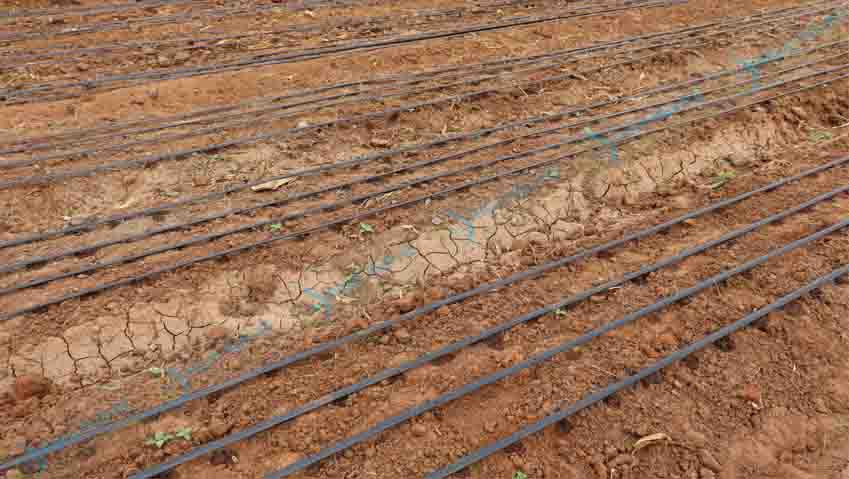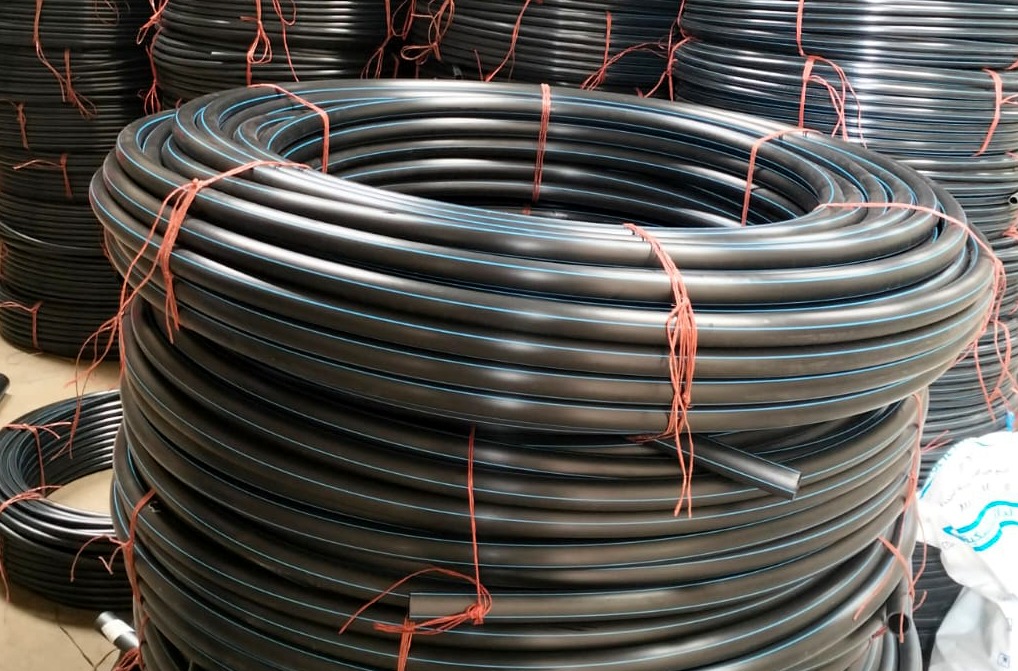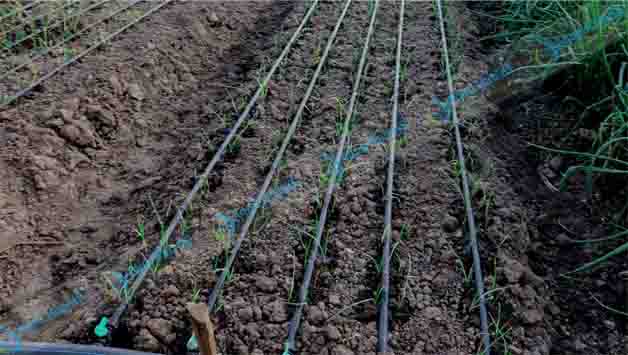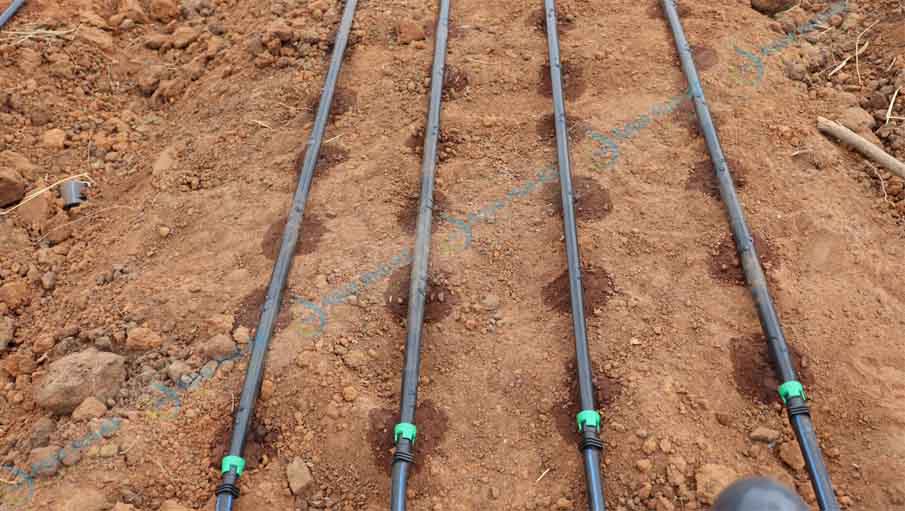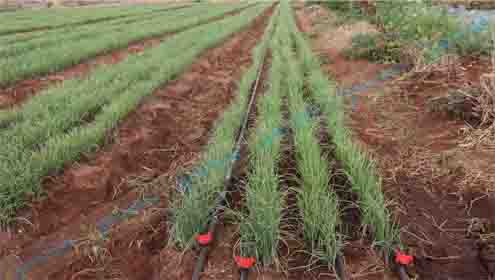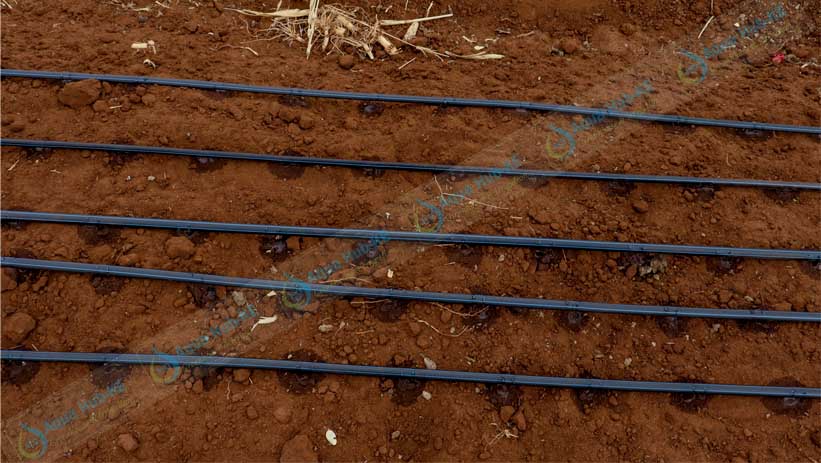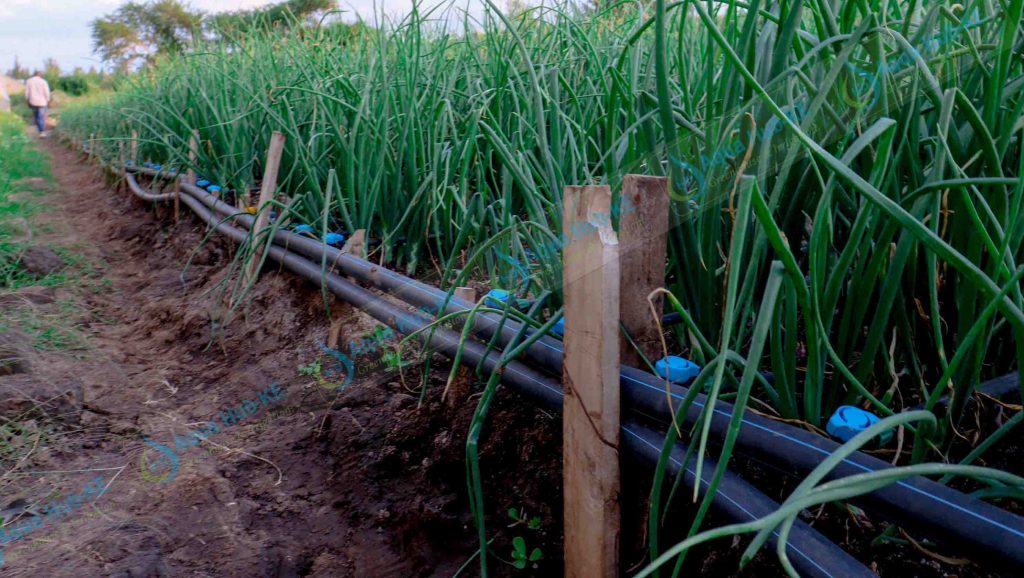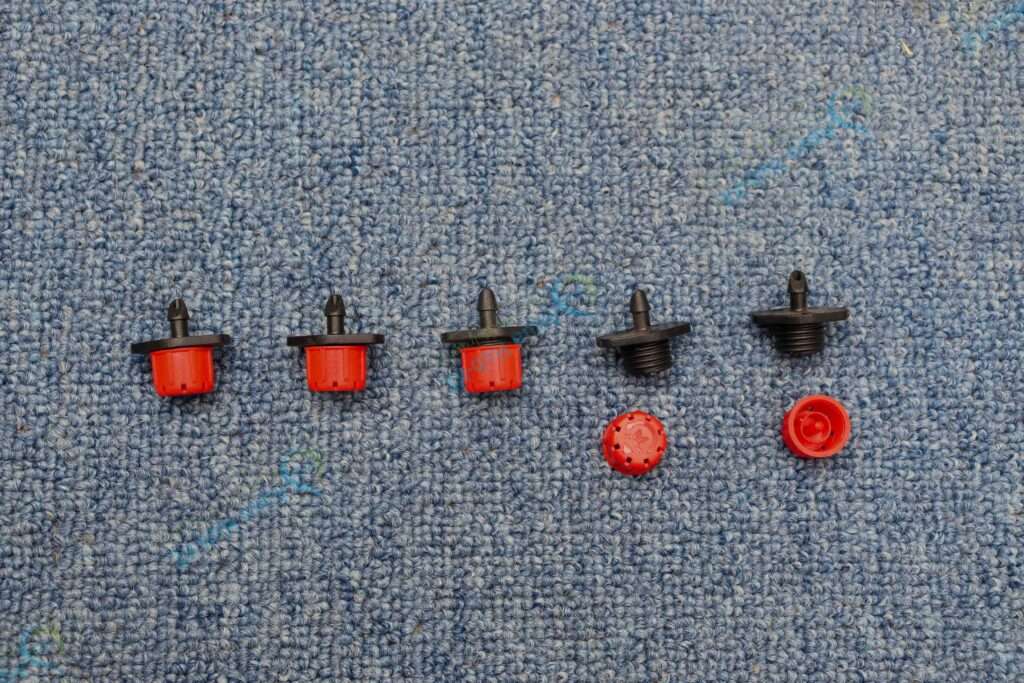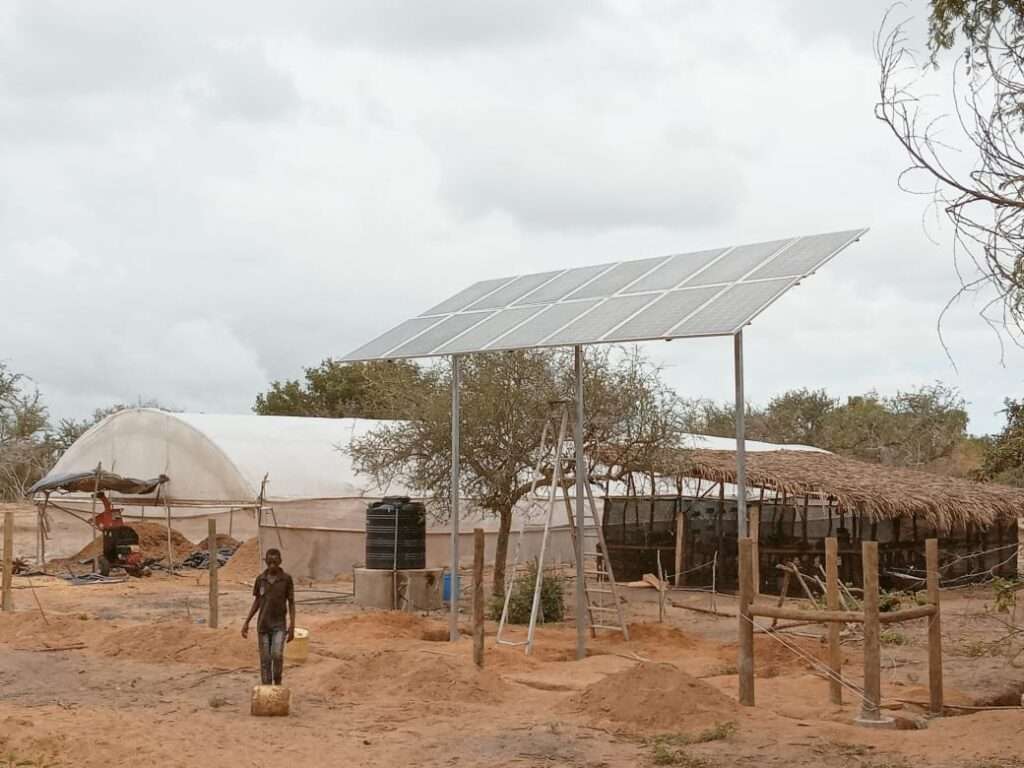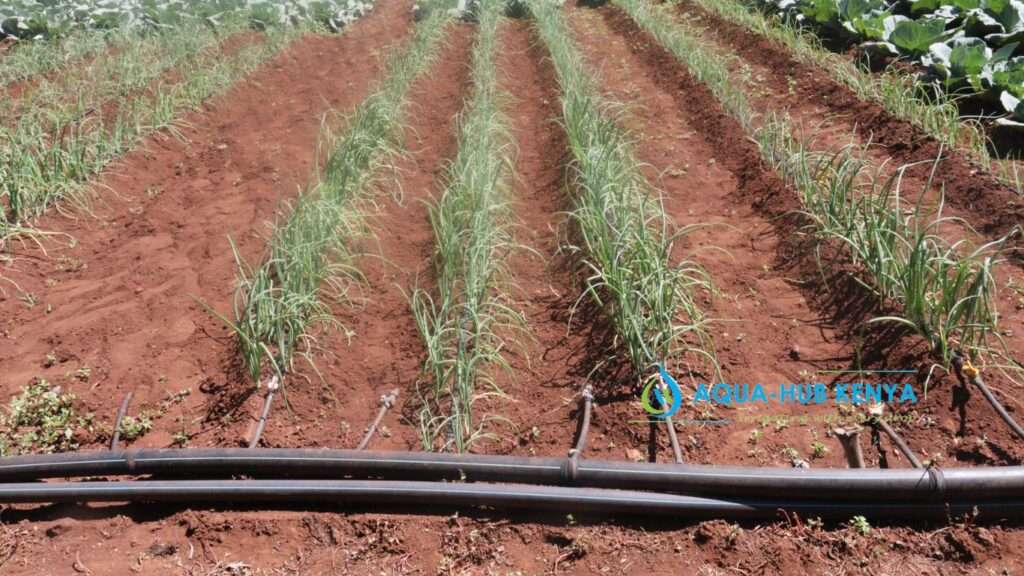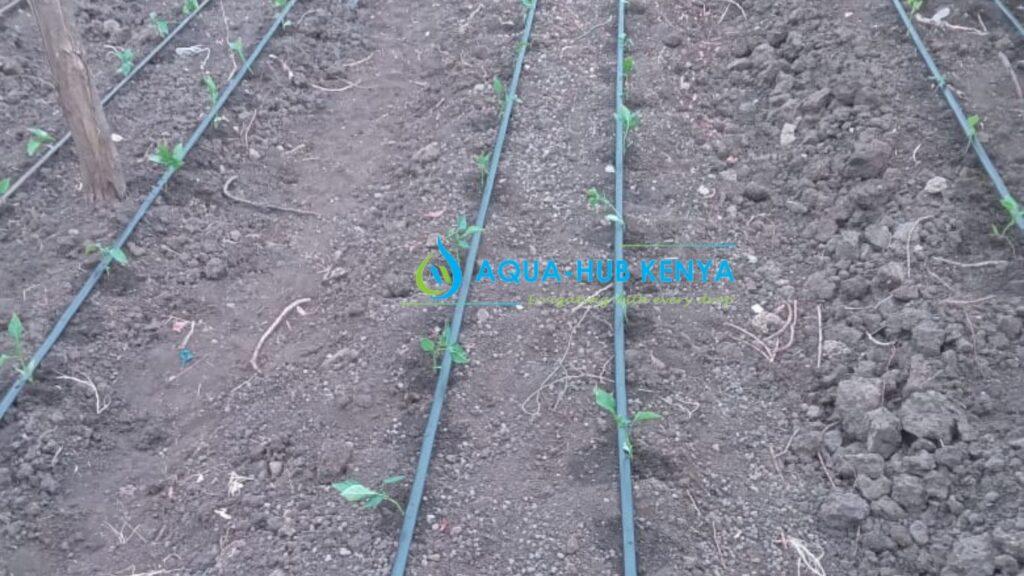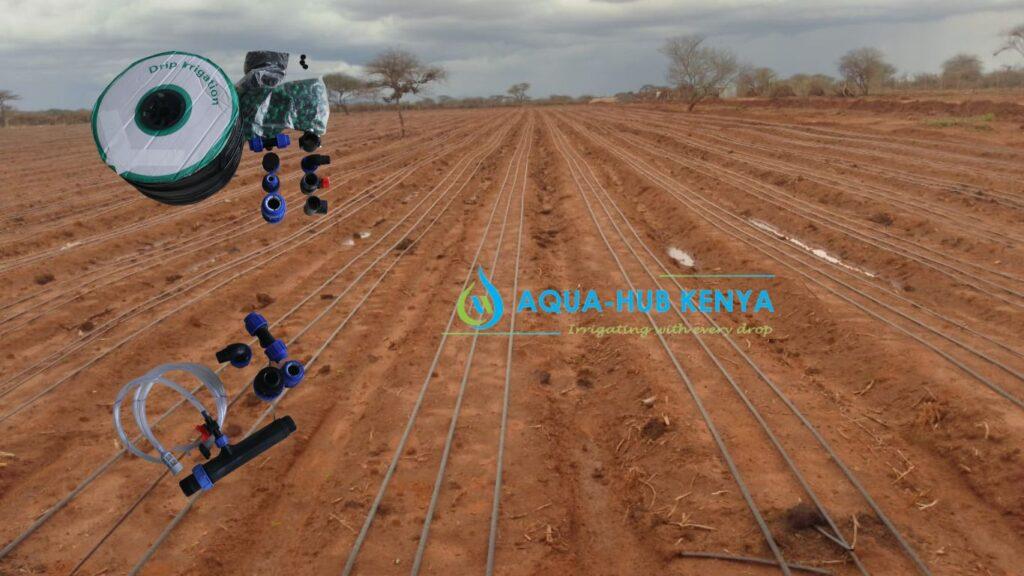Sub Surface Drip Irrigation System in kenya
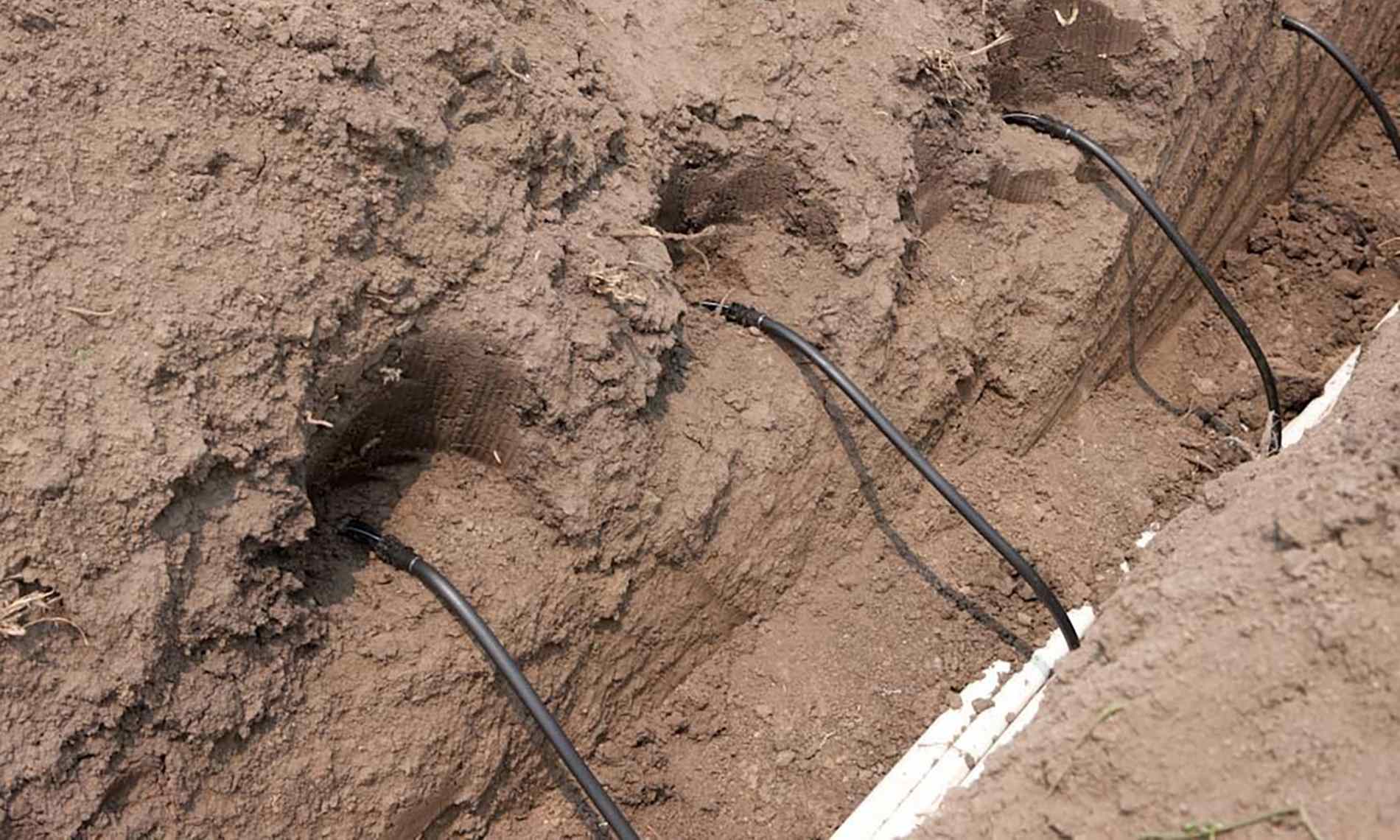
Sub Surface drip irrigation is the layout of drip irrigation with pipes and emitters buried below the surface. The main goal of subsurface irrigation is to enhance a higher efficiency and water conservation.
The layout works for a variety of crops but requires higher maintenance to curb clogging of pipes.
Types of Sub surface Drip Irrigation
Shallow Layout
Shallow method is the layout of drip emitters or laterals on a small depth that is close to the surface. Can be a few centimetres below the surface depending on the shallow root type of crop.
Deep Layout
Deep burial represents the layout of drip lines and pipes under a considerably deeper distance from the ground. Suitable for a long-term irrigation of crops with deep roots. The pipes are buried 20-30 cm below the ground surface. Consist of thick drip emitters that enhances long durability.
Additionally, pressure compensated (PC) drip lines may be used to achieve extra-long run lengths, or to irrigate on sloping ground.
Sub Surface Drip Irrigation Application
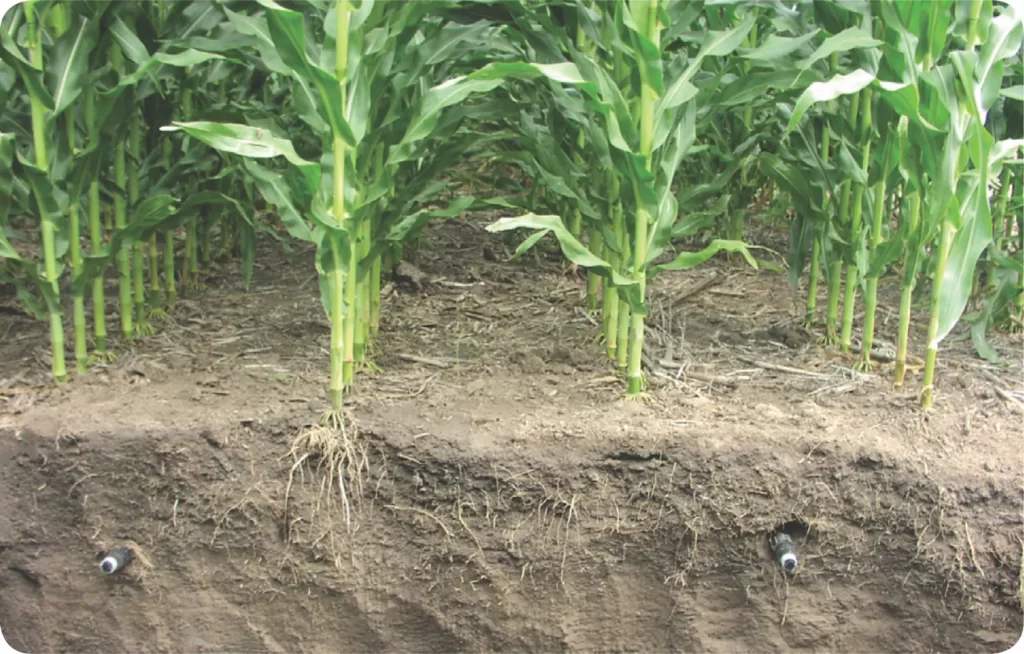
Subsurface drip irrigation system is suitable for irrigation of variety of crops. The crops include.
- Sugarcane
- Corn or maize plantations
- Cotton
- Vineyards
- Tomato
- Orchards
- Strawberry
- Vegetables such as kales and spinach
What You Need for a Sub Surface Drip System
- Mainline HDPE pipes
- Water Filters
- Ball Valves
- Elbow and Tee fittings
- Drip Fittings
- Risers
- End Caps
- Ball Valves
- Drip lines
- Air Valves
How to Install a Sub Surface Drip Irrigation System
- Prepare beds to lay emitters.
- Dig trenches of about 60 cm deep to lay the mainline and sub mainline pipes
- Make trenches of 20-30 cm on the beds for burying emitters.
- Lay mainline and sub mainline pipes on the trenches.
- Connect mainline pipes to water source or tank
- Connect the water filter to the pipe section on the main line near the tank
- Use tee connectors to connect mainline and sub mainline pipes.
- Using start connectors, connect riser pipers to sub mainline pipes
- Lay emitters to the trenches on the bed.
- Flush the system to remove debris
- Close mainline pipes with end caps.
- Connect risers to drip emitters using drip connectors.
- Connect end caps to the drip emitters.
- Bury the mainline pipes and emitters with soil
- Test the system
Benefits of Subsurface Drip Irrigation
Sub Surface Drip Irrigation is the most advanced form of irrigation. Although there is more complexity in setup, there are significant advantages that warrant covering here.
Saves Water
Subsurface drip irrigation system has a higher water saving capacity as water remains under the soil. The moisture drops gets soaked in the soil beneath the surface and rarely reaches the surface soil. Roots absorb the moisture before they get to the ground surface.
This makes evaporation chances very narrow to occur thus better water utilization.
Minimize weeds
Since water flows and wets the soil underground for direct root absorption the soil surfaces in between plant rows remain dry. The dry surfaces remain bare and unable to support the growth of weeds. This allows plants to get sufficient nutrients and also lowers costs of herbicides and fertilizer application.
Stronger root structure
Sub surface drip irrigation laterals are buried 20–30 cm below the ground roots need to “chase” the water. This leads to a very healthy root structure that penetrates deep into the ground, as opposed to concentrating on the surface. Deep burial can provide an excellent solution for crop rotation of broad acre/full cover crops.
Reduce plant disease
With a sub surface drip irrigation method, the risk of fungal infections to plants are very rare. Due to dry soil surface, there is less humidity and warm soil temperature. Therefore, crops mature properly and yield quality harvests.
Easy movement and Harvesting Process
The underground installation of drip lines and pipes makes it easier to weed or walk around the field. Harvesting will be much easier especially in large plantations that use machines.
For example, harvesting of nuts using mechanical sweepers, can be a challenge with surface irrigation systems.
Uniform Water distribution
Sub Surface Drip Irrigation improves moisture and nutrient distribution in soil for up to 360 degrees around the drip lines. Comparatively, when a dripper is on the surface, the water can only distribute in a 180-degree pattern.
In addition, the wetting pattern is large as compared to surface Drip Irrigation.
Subsurface Drip Irrigation by Aqua Hub
Aqua Hub Kenya deals with installation of sub surface drip irrigation layout at affordable prices in Kenya.
Call 0790719020

